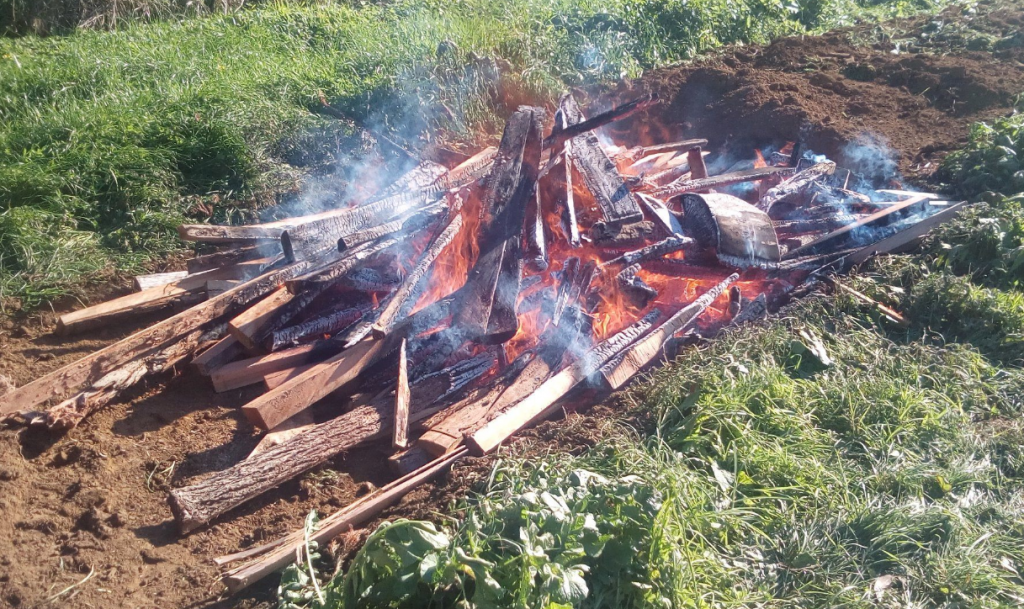Biochar from sawmill waste
We have a small woodlot of eucalyptus, black walnut and Australian Blackwood. The trees have not been pruned or thinned recently and there were five large (20m) pine trees overshadowing some areas. Storms and natural die off as well as the lack of thinning meant that there has and is plenty of timber to take out and find a use for.
Sick of cutting it all up for fire wood, we bought a small portable sawmill in late 2018. One unanticipated outcome of this was the large volume of ‘waste’ wood that milling creates. Some trees have such poor form that yield is only 20% of the log in milled timber. The rest is long thin strips, often too thin to bother cutting for firewood and too much work to run through a chipper for mulch.
So what to do with this timber? How about biochar?
A flame cap pit burn has been the method of choice because it allows
long lengths to be used and holes are cheap. We can also dig a shallow
pit relatively easily with the blade on the tractor making it the length
of the scrap timber so I don’t have to cut anything to length.

We find a spot close, but not too close, to the scrap timber pile. Ideally the timber has dried for a few months but only the early part of the burn needs to be really dry. You need to be away from hedges and other potential fire risks.
We do all of our burns in winter,
which makes for much more pleasant working conditions and reduces the
fire risk. The ideal day would have little or no wind and of there was
wind it would be away from close neighbours and the road. Local roads
have been closed several times in the last few years by smoke from
bonfires close to the road (not by me, though!)
Make sure you have a
large volume of fire fighting water. We have a 40mm hose nearby that
can put out just about anything. We have also used IBC containers of
water to quench in the past if we are out of hose reach. It is too late
to organise this at the end or if there are problems. Do it in the
beginning.
A small fire lit in the bottom of the pit with dry timber gets thing going. Then slowly add larger dry pieces. Once it is well alight you can add larger and wetter timber, but freshly cut timber, being soaking wet, will make for a smoky, difficult burn so is not suitable in any volume. Very large pieces will not always fully burn down to embers so may need to be taken out at the end and added to the next burn. Do not use timber with nails, paint or chemically treated. You will likely end up with contaminated biochar.
Each time you
see ash forming on the embers, add more parallel pieces of timber. The
pit will soon be full of embers. When you run out of timber, time or
enthusiasm, completely fill the pit with water. Any reasonable pile of
embers not completely doused can have enough energy to dry the pile and
restart the fire, so do a good job of this.
The next day you can
shovel out the charcoal from the pit, unless you didn’t put it out
properly in which case you will just have ash! It may still be quite
warm so another go with the hose won’t hurt.
Depending on the size of the pit, you may have a cubic meter of charcoal at this point.

| Thanks Cam (Ed) |
